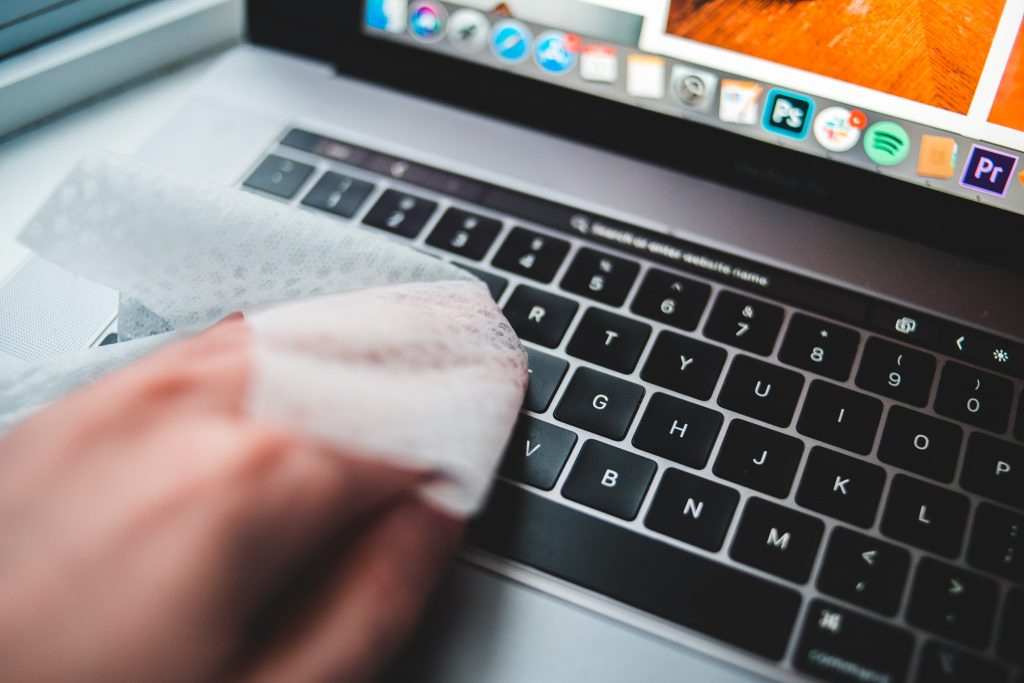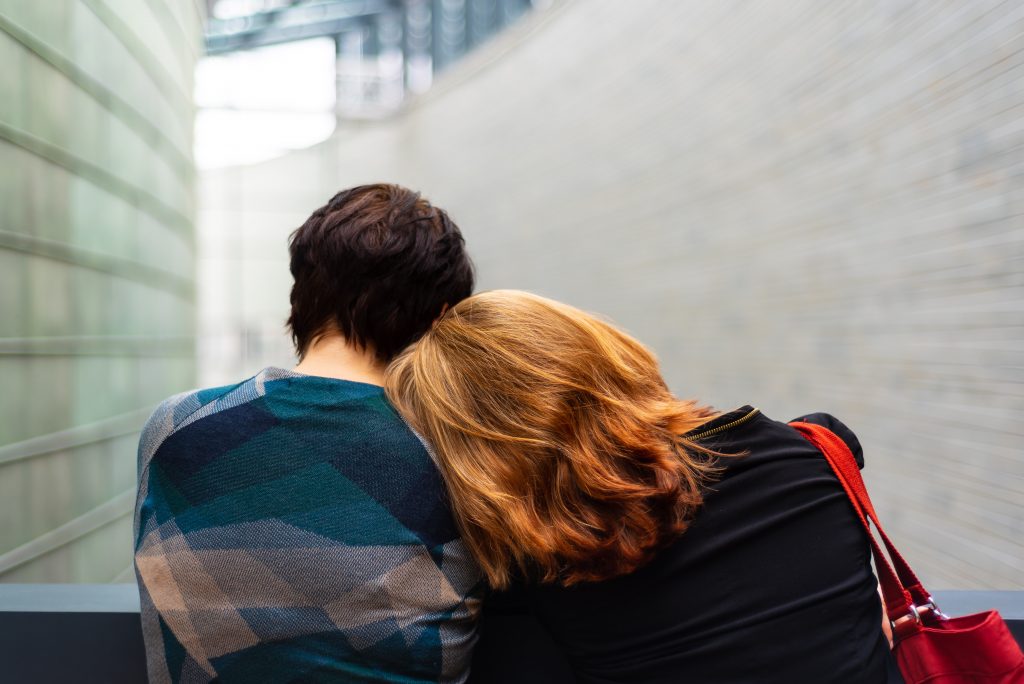By Sarah Kopinsky – Most academic disciplines teach students to be critical, objective, lateral, unconventional thinkers who deeply root their work in evidence. I too, take these lessons with me in my work, but when this pandemic hit, so did this Epictetus quote:
“Some things are in our control and others are not.”
I couldn’t help but figure that in this very specific case, it was responsible to include a short personal story before exploring this very challenging thing with you:
Sucked into the Vortex
I was 10 years old, on holiday with my family and experiencing flu-like symptoms. Nausea, fever, muscle pain, nothing that would make one consider visiting the nearest emergency room. Nevertheless, my family decided to go home. On our way back the symptoms rapidly worsened until they became unmanageable and within hours, I had lost consciousness. As fate would have it, a doctor who specialized in neurological conditions, heard the panic, spotted me and immediately alarmed his hospital.
Once arrived, he informed my family that it was Meningitis and that my chances weren’t great to make it. Long story short, he also thought me the great joy of beating statistics. In time the sensation of total loss of control and intense fear dampened, but I learned something that day that changed me forever. When my world became completely silent- I also became aware of the incredible human ability to become present within total chaos and how important it is when in extreme fear.
Years after this, I joined a dinner when someone mentioned that he read the strangest thing. He started telling us that when we are swimming in the ocean and suddenly, out of nowhere, are forcefully sucked into an uncontrollable stream – a sea vortex- our first response is to fight it and resist. But that this is what we do wrong. When the vortex sucks us in, we spend so much energy resisting this insanely strong force that we tire, suck in water and drown. He then said: “Those who surrender to it, can see the built-in exit that every whirlpool has their way out. So, they have a much better chance of coming out of it. These things always end you see.” Right now, the best we can do, is look for our way out of this incredibly strong and frightening thing we were forced into.
Pandemical Psychology
Steven Taylor (2019) suggested that pandemics are psychological phenomena. He found that pandemics did not come out of nowhere but were caused and contained by the way people behaved and lived. Once people, however, agreed to change their behaviours such as washing hands, covering coughs, socially distancing themselves, they helped contain it.
Unfortunately, behaviours such as racism, over-defensive reactions, high distress and panic, hoarding and overcrowding hospitals were also found to become more likely. Strong (1990) previously found that in panic, people’s irrational primitive emotions that are deeply buried within, often emerged.
The Manichean model explains that people have a dual nature. They hide their very dark emotions in regular times, but once an epidemics hits, their unpleasant, highly unconscious emotions dominate. People have had bad scripts which they believe and some display these when under such massive pressure.
Disrupted social order severely tests our social collective consciousness and collective coping mechanisms, especially the parts which were left unexamined (Strong, 1990). PTSD, obsessive compulsive disorder, anxiety disorders and distress symptoms were also found to worsen during severely difficult times (Taylor, 2019).
Lu (2015) further found that activity in the amygdala (located in the brain and believed to detect and be highly responsive to fear) increased when confronted with high level threats.

What Leaders can Do to Help
Taylor (2019) advised that it was much wiser to make people aware and to clearly direct them of the exact ways in which their actions help stop the spread of a virus. People were also found to be more likely to change their behaviour in order to avoid (directly) hurting others, upon being clearly informed.
Leaders were told to make their messages salient and be transparent about how the elderly, those with pre-existing health conditions etc., were going to be affected. People were, in turn, far more likely to respond and change behaviour and it influenced their decisions. This doesn’t mean that people were found unwilling to act otherwise; it simply implies that unclear messaging and vague instructing were often translated into: It could help stop this, but it could also not. We do not know… Leaders and policy makers must therefore be direct and solid in their approach and instructions (Tang & Wong, 2005, Bish & Mishie, 2010 &Taylor, 2019).
Many psychologists- specialised in decision making and human judgement processes- help leaders communicate real risk levels, while demonstrating a sense of control. They help leaders identify and select the few things people need and want to know and help them figure out how to best explain this in a very honest, trustworthy manner. Using infographics and visual presentations are great ways to communicate in these times because it makes people use more primitive brain parts which helps keep them safe.
When leaders give people concrete detailed actions to protect themselves and talk about the exact efforts that are already being made, they help people act instead of cause severe panic. Panic was found to hurt society’s most vulnerable members and those prone to severe stress and anxiety first, while they most need the support and considerate actions of their environment (Lu, 2015 & Taylor, 2019).
Leung, Ho, Chan, Ho, Bacon- Shone & Choy et al (2005) further suggested that people prone to anxiety were also first to adopt precautionary behaviours, and to follow instructions first. Speeches should be tested multiple times with audiences to understand responses and possible communication errors and their impact and outcomes should be evaluated to meet health needs.
What Do Leading Virologist Want us to Know about COVID-19?
Lu (2015) explained that humans have gone through generations now without being seriously affected by infectious diseases such as, ‘pertussis’ (whooping cough) and ‘varicella’ (chicken pox). Therefore, they, have been out of touch with calculating the risk of these highly contagious- out of the blue- s***starter enemies. Dr. Osterholm (2020) explained that humans have had their struggles with viruses for a very long time now; the black plague, swine flu, Ebola, you name it.
A virus is described as a micro parasite which uses our cells to replicate itself and its aim is to make a lot more of itself. It moves from cell to cell for this reason. New flu viruses jump from the animal population into the human population and are then transmitted human to human. This influenza type of flu is transmitted by breathing out the virus by those infected. The tiny particles move through the air and the virus is therefore marked: airborne. Most of us, know that HIV/AIDS, for example, transmits blood to blood. But the COVID-19 Virus, being airborne, has grown harder to contain, which makes it likely to burden and overtax our healthcare systems in no time.
The reason people are summoned to “flatten the line” by social distancing themselves is because it has already started moving extremely rapidly and could cause the system to collapse if we all get it simultaneously. It already exists within the community, but with younger and healthier people the virus has been found to be experienced more mildly then when it hits people over 55 years and up.
It is estimated that around 20-60 % of the population will at some point get it, but the point of what governments are doing now, helps to protect the most vulnerable within the population as well as its healthcare systems -which are by no means prepared- for everyone needing their help at the same time. If 100 people suddenly need immediate care at the hospital and it is only equipped to handle 25 cases at maximum capacity, that collapses the system and those who work in it-who already are on the front-line.
People are advised to immediately contact medical professionals when symptoms include: muscle aches, fever, chills, headaches and dry coughs. Limit going outside for now unless absolutely necessary! Those who already passed the virus, have also reported experiencing additional symptoms such as intense body aches and the inability to taste or smell anything. Those who have beaten it are now immune to it, while others may have been naturally protected, but this pandemic will very likely still affect millions of people.
You can watch the entire brilliant episode where Dr. Michael Osterholm speaks at the Red Table here.
And another one where he speaks with the popular ‘JRExperience’ host, Joe Rogan, here.
You can also visit http://www.cidrap.umn.edu/ to learn more about the Coronavirus using academic sources
Staying Physically and Mentally healthy Matters now more Than Ever!
- Talk about this to regulate your emotions.
- Everyone is rightfully concerned. The best you can do to bring yourself around is talk about it so you can regulate your emotions.
- Step away from highly stressful situations where people are firing each other up by sharing unsourced information.
- Don’t watch the news 24/7, try to focus on keeping a routine for yourself. This will help you to not let anxiety and worry get the better of you.
- There are licensed online therapists who can help you when fear and panic become hard to control and disrupt your functioning.
- This is likely to happen to many people during these times.
- Look after yourself better than ever
- Get into very healthy eating so your immune system is well looked after.
- Create a place in your home where you can do home exercises (YouTube is great, but many gyms have made online sessions available!)
- Stay hydrated and keep your distance
- Immune systems don’t like stress, so do some meditations or breathing exercise to protect it and try and keep your thoughts from spiralling.
- Sleep well
- Read some books or do an online course and if you can, keep working.
- Relax by watching movies, listening to music, create some art or do whatever it is that you love doing.
- Limit alcohol.
- Don’t let panic waves and anxiety streams suck you in. The more afraid we are, the better we store information about it and the easier we can recall it (availability bias/ heuristic).
- Look after those you love most, and care for those around you
- Keep your distance from people who are in high risk factors.
- If you can, try including -at higher risk- family and friend’s groceries, in your weekly grocery visits and leave the groceries at their door.
- Keep in touch by using modern technology as much as you can. Loneliness will increase and this could help families and friends stay connected and be there for each other.
- Show love by buying some gift cards or by sending out some online messages, share entertaining, funny and loving videos, and give some shoutouts to the incredible heroes, such as all healthcare workers, public facilitators and volunteers who work nonstop- to be there for those in need.
- Stay informed
- Avoid making judgments about the probability of this event based on what you heard about previous events, while under uncertainty. They might not be as corelated as we believe they are (representative bias).
- Remember that we wouldn’t have gotten this far in our evolutionary process by being terrible at it.
- Try to be light in the darkness for yourself and others and stay as centred as you can.

Collective Trauma and Growth
Hirschberger (2018) described collective trauma as a collective event which shatters the fabric of society and brings a crisis of meaning. Trauma is further described to cause a blow to the psyche. It breaks through defence mechanisms, with such brutal force, that one can not effectively respond to it. It eventually becomes an idea, that the previous self, might have disappeared (Erikson, 1976). “What a minute!”, you’ll most likely say. “Trauma’s only comes from war, or human violence, from extreme poverty, from severe wrongdoing…”
But just because something is not forced upon another by human hand, does not imply, the outcomes will not find their way into peoples’ lives while matching the above description. There are hundreds of thousands hurt by this virus, thousands dying, doctors and nurses on the front-lines without seeing their families, overworking and facing the risks of this outbreak. There is chaos, there are human cognitive, emotional and social systems, constantly on very high alert, there will be much trauma, massive unemployment, entire countries shutting down, people are hurting in so many ways, massive trauma is involved.
Hirschberger (2018) explained that natural disasters have their way of getting into our collective memory, because life is at high risk. Humans are social animals, who constantly seek meaning, safety, belonging and they have very elegant cognitive system that enables their awareness. Collective deep pain because of this massive disadvantage is a psychological and health blow to our safety. From an existential perspective, the best-case scenario is that people can also be inspired to take incredible collective action to stop others from getting the virus and be veritable heroes in the process.
Trauma is considered highly negative, quite simple because it is. Hopefully, in time, there will be room for collective healing. Tedeschi and Calhoun (1996) found that for many, a transformational shift occurred after trauma, where new inner strengths, skills and developmental sprints happened. They were often more compassionate toward others, grateful for the small things, better at intimacy and awareness, and were capable of nurturing deeper and loving relationships. Recovery and healing are about taking back power and control over what is within our power and control, and about taking responsibility and ownership of what we still can. Perhaps, the aftermath will include more mature collective coping mechanisms and unity, better leadership, stronger social ties, spirituality and global kindness and teamwork.
The one thing that saved many from the Tsunami’s in Hirsberger (2018) work was traditional storytelling which included instructions of how to handle natural blows. In addition to collective PTG (post traumatic growth), collective memory exists; created to inform future generations of how to identify and defend themselves in life threatening situations. Perhaps this is our wake-up call to examine our own unexamined- and sometimes- dark parts within society and bring light to them, so that future generations will, hopefully, know how to find their way out, easier, when necessary. But right now, all of that doesn’t matter because pain is everywhere.
With hundreds of thousands of cases and death tolls rising rapidly- the unbearable pain on those infected, their families and caretakers rise continuously. It matters now more than ever to become aware of our own feelings and actions. To realise that how we choose to behave, can affect us all in no-time. We must remember that we too are holons (Fish & Priest, 2011); autonomous parts of the cosmos, who simultaneously, are also parts of a tremendous universe.
We are all connected and depended of each other’s actions to protect ourselves and each other. What we do to one, we do to all. This perhaps, more than ever, is becoming clearer than ever. The worlds leading experts are using their tremendous minds and are working day and night on finding a vaccine to help us find our way out. Information from our collective memory and knowledge of natural disasters and history tell us they very likely will.
As Jung said: “Nature is often obscure or impenetrable, but she is not, like man, deceitful.” (Jung, 1966 P. 162).
“Nature is often obscure or impenetrable, but she is not, like man, deceitful.”
We must follow the given guidelines to the best of our ability, out of self-love, family, and love for humanity and in order to find our way out of this war on our global health. Stay safe, stay kind, look after one another!
If You Need Someone To Talk To
Given the current situation with a global pandemic affecting us all, it is normal for feelings like anxiety, stress and worry to arise. Speaking to a psychologist at a time like this can help manage these emotions.
At Personal Online Therapy (www.personalonlinetherapy.com/) we specialize in individual online counseling, therapy & coaching. After a brief consultation we will match you with one of our online licensed psychologists based on your specific needs and preference. The sessions will be scheduled based on your preference (24/7) through a secure video call.
How to start? Please contact: info@personalonlinetherapy.com or fill out the form below.
References:
Bish, A., & Michie, S. (2010). Demographic and attitudinal determinants of protective behaviours during a pandemic: a review. British journal of health psychology, 15(4), 797-824.
Epictetus & Long, G. (1916). The discourses of Epictetus: With the Encheiridion and fragments. London: G. Bell and Sons.
Erikson, K. T. (1976). Everything in its Path. New York, NY: Simon and Schuster.
Fish, J. N., & Priest, J. B. (2011). Identity structures: Holons, boundaries, hierarchies, and the formation of the collaborative identity. The Family Journal, 19(2), 182-190.
Hirschberger, G. (2018). Collective trauma and the social construction of meaning. Frontiers in psychology, 9, 1441.
Jung, C. G. (1966). Two essays on analytical psychology (Collected works of CG Jung, Vol. 7). Read, M. Fordham, G.
Leung, G.M., Ho, L., Chan, S.K., Ho, S., Bacon-Shone, J., Choy, R.Y., Hedley, A.J., Lam, T., & Fielding, R. (2005). Longitudinal assessment of community psychobehavioral responses during and after the 2003 outbreak of severe acute respiratory syndrome in Hong Kong. Clinical infectious diseases: an official publication of the Infectious Diseases Society of America, 40 12, 1713-20 .
Lu, S. (2015, 1). An epidemic of fear. Retrieved March 20, 2020, from https://www.apa.org/monitor/2015/03/fear
Rogan, J., & Osterholm, M. (2020, 10). Joe Rogan Experience #1439 – Michael Osterholm. Retrieved March 20, 2020, from https://www.youtube.com/watch?v=E3URhJx0NSw
Strong, P. (1990). Epidemic psychology: a model. Sociology of Health & Illness, 12(3), 249-259.
Tang, C. S., & Wong, C. Y. (2003). An outbreak of the severe acute respiratory syndrome: predictors of health behaviors and effect of community prevention measures in Hong Kong, China. American Journal of Public Health, 93(11), 1887-1888.
Taylor, S. (2019). The psychology of pandemics: preparing for the next global outbreak of infectious disease. Newcastle upon Tyne, UK: Cambridge Scholars Publishing.
Tedeschi, R. G., & Calhoun, L. G. (1996). The Posttraumatic Growth Inventory: Measuring the positive legacy of trauma. Journal of traumatic stress, 9(3), 455-471.
What You Need to Know About the Coronavirus, (2020, March 19). Retrieved March 20, 2020, from https://www.facebook.com/redtabletalk/videos/596573410959049/

